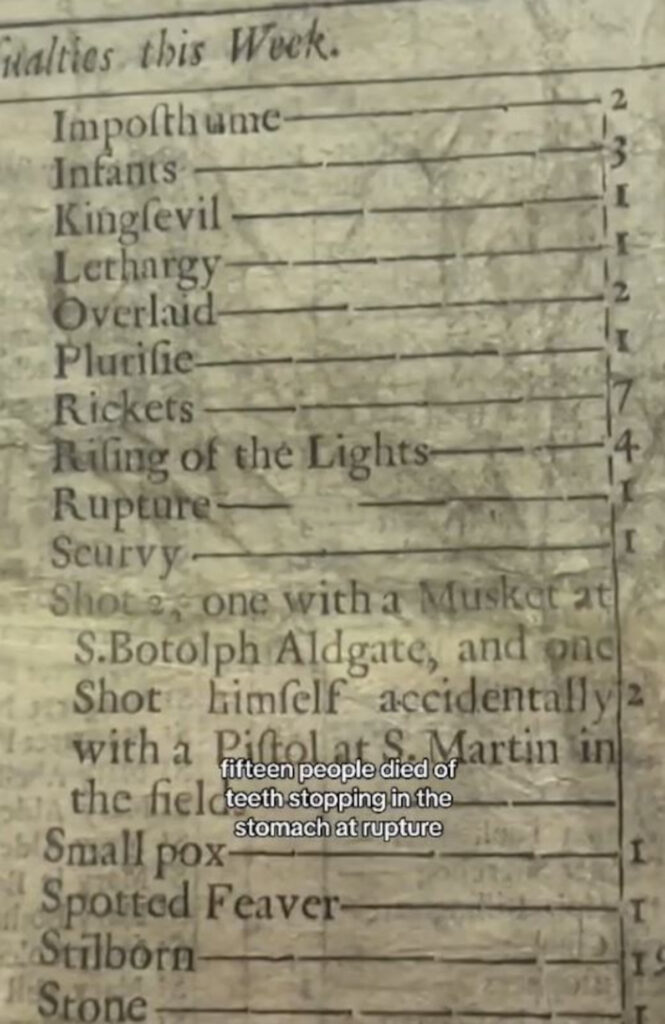BRITS have been left baffled by the list of bizarre causes of death in London in a 17th century Bill of Mortality – including “King’s Evil” and “wind”.
David Harry was visiting the Museum of London yesterday when he spotted the lengthy list highlighting how Londoners had died back in the early months of 1675.
Tickled by the zany names and bizarre afflictions named on the list, David decided to take a video to amuse fellow Brits.
Footage shows the large piece of paper, yellowed with age, boasting an alphabetical list of causes of death alongside the numbers of those whose lives were ended as a result.
On-screen text reads “How did Londoners die? February 1675 Bill of Mortality” as David can be heard saying: “This lists the causes of death within the city of London.”
As the camera pans down the list, viewers can see that one of the many causes of death appeared to be old age, whilst another appears to be “childbed” – now known as “childbirth”.
These are paired with many other illness-related deaths still common today, such as cough, consumption [bacterial disease] and fever.
However, in addition to the more common causes, David then reveals some of the bizarre ways in which people have died – and the odd names to describe them.
The unusual causes include bruises, teeth, wind and King’s Evil – which is now known as the tubercular infection scrofula, named as such on the belief that the cure was being touched by a monarch.

The camera pans to the other side of the list as David reads the list: “One person died from worms, one of wind, four of tissick, thrush, teeth – 15 people died of teeth – stopping in the stomach, rupture.
“Rising of the lights – that means your stomach guts coming out of you – griping in the guts, accidental killing, dropsy, cough, convulsion, consumption, aged – 19 people – and apoplexy.
The camera zooms out to show that the bottom of the list has a listed number of how many men and women died during this time.
The numbers appear to be split into groups of those who were christened and those who were buried.
The list also shows the number of people who have died as a result of the Black Plague, detailing a whopping 148 men and 126 women.
David concludes: “Each week, they would list the causes of death.”
The camera pans out to show that 132 parishes had been “affected” by the plague during this month.

David shared the footage on social media yesterday, writing: “The so-called Bills of Mortality were the responsibility of the parish clerks to weekly list the causes of death in the City of London.
“This one dates from February 1675, less than 10 years after the plague in the Great Fire of London.
“Once the age at the point of death was also known, this became an essential part of the actuarial science and the birth of life insurance.”
The post received over 1,000 likes and dozens of comments from shocked Brits left perplexed by the bizarre causes of death.
One user asked: “How do you die of wind?”
Another commented: “My great-great grandmother made the Watford news, dying from asphyxiation of a drop of brandy. Newspaper clipping to hand too.”
A third added: “I won’t die of wind but people around me do.”
Another wrote: “Probably from drinking the contents of chamber pots.”
A fifth commenter said: “Riveting stuff. Love a bit of history – and to think it brought us all here today.”
